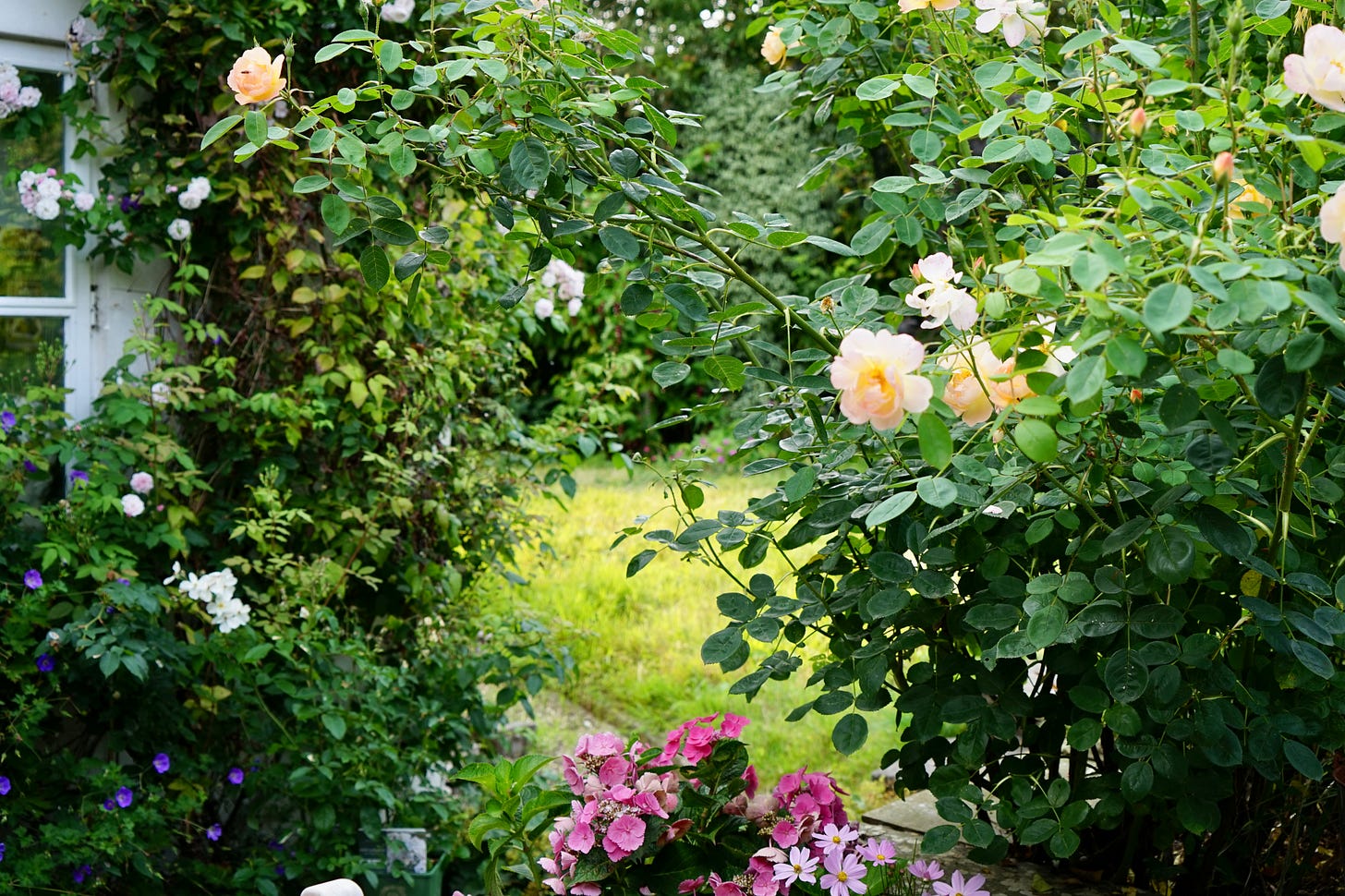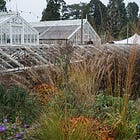Small Garden Design - Week 5
How to design your small garden space. Plus: a new Zoom date
UPDATE - FOR THOSE OF YOU NOW JOINING:
You’re absolutely welcome to join this course at any time. Here’s where you can catch up:
You can find Week 1 here:
Week 2 here:
Week 3 here:
Week 4 here:
The next Zoom will be on Sunday 8th December at 6pm UK time - it will give us a chance to chat through our ideas, and even share your plans so far - if you’d like to, of course. This Zoom will be for paid subscribers: as mentioned previously, the subscription will be increasing shortly, so if you’d like to jump in now so that your fee is fixed forever at the same amount, you can do so here:
Maybe a membership of our community could be a good gift idea for someone who doesn’t want any more ‘stuff’?
This week, we are measuring properly
By now, you’ll have:
a photo
notes on what you can see
a rough measured or paced outline of your space
an idea of how you want your garden to feel, with a moodboard and notes hopefully written your lovely Small Garden Design notebook, or, as is more likely in this household at the moment, scribbled down on the back of a receipt which you then put in a ‘safe’ place, and absolutely knew for sure that you’d never throw it out it in a sudden fit of sweeping all the rubbish off cluttered kitchen worktops.1
All of these items are essential preparation for what I’m going to ask you to do next:
We are now ready to survey
First of all and most importantly:
Surveying essentially means getting to grips with the size of your garden, measuring and noting down where things are.
Measuring a garden is a whole subject in itself, and I tend to use professional surveyors in order that I get the levels just right and that everything is in the right place before I start. These surveyors produce something called a topographical survey, and this includes EVERYTHING that a professional needs to create a design: measurements, levels, locations of trees, thresholds, flowerbeds, trees, manholes, telegraph cables etc. You may even decide that this is something you want, and we can discuss this more, but for small garden purposes, let’s see how we can manage to survey by ourselves.
Tools
A long measuring tape and a shorter one
Of course, this is how-long-is-a-piece-of-string territory. The size of the tape depends on the size of your garden: I find the wind-up-yourself ones easier to manage than the metal ones which can, when pinging back to their home, take bits of my fingers with them. But having a shorter one is useful for taking offset measurements: see below. The roll-y ones are also good because you can leave them in place as a baseline - more on that in a moment.
One of the handiest tips I was taught when I carried out my first survey: have a cloth handy that you can wipe your measure with before it rolls back up into its home. This prevents dirt from getting inside its little house, avoiding clogging it up in the future.
Some people suggest a hand-held laser. I have one. I am incapable of using it. Just saying.
Notebook, or an A4 piece of paper and clipboard
Pencil and eraser
Tracing paper
You’ve got your outline of your garden, now, if you’ve got a printer, take a photo of this from above and print out a couple of copies. If you haven’t, don’t worry and use that thin tracing paper to go over your outline.
Camera
Take photos of anything you think ‘hmmmm…’ about; it’ll avoid having to go back later to decipher that weird squiggle in your notes. Generally a video is a good idea too, but you can bet your bottom dollar that there’ll always be one thing in your notes that you either can’t read or can’t fathom the meaning of, which is why it’s a really good idea to draw up your measurements as soon as you get inside, especially if the garden you’re working on belongs to someone else.
You’ll be convinced that you’ll remember what you’ve noted, but I can guarantee that if you leave it overnight, the next day you’ll be wondering why on earth you can’t remember seeing the ‘nuns’ that you so clearly marked in capitals on your plan the day before, as below:












